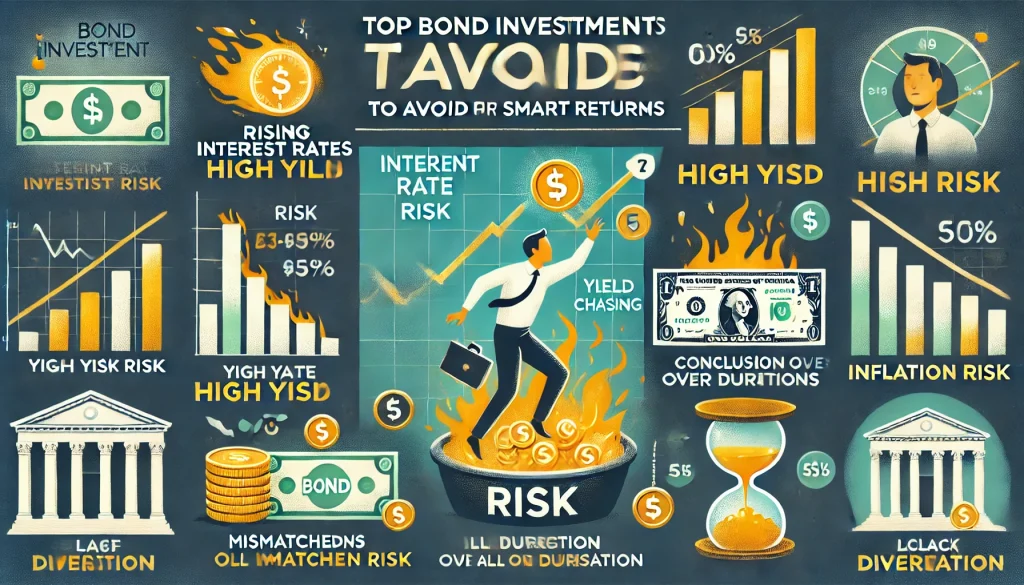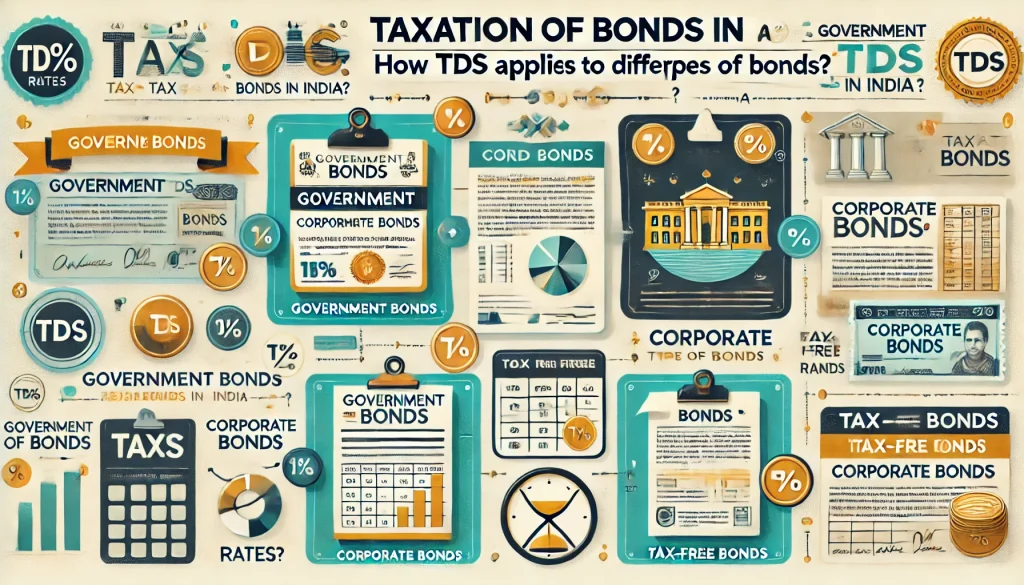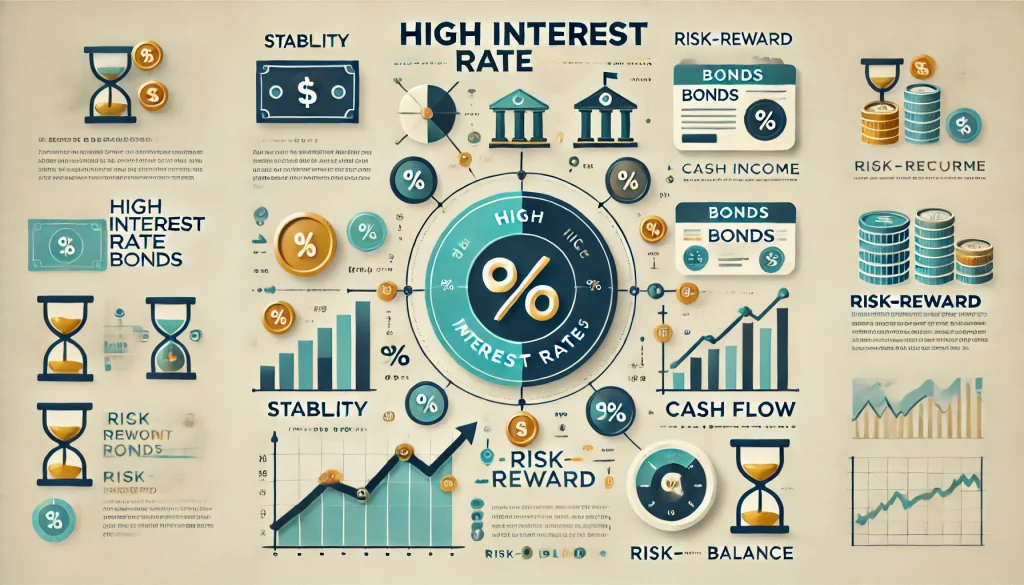
Bond investment helps investors earn higher income compared to other debt instruments. However, certain bond pitfalls make investors susceptible to high risks, leading to financial losses. It is integral to avoid such losses to meet the financial goals. Ensure you avoid the following mistakes while investing in bonds to minimise risks and maximise income.
10 Common Bond Investment Errors and How to Avoid Them
Here are the 10 common mistakes investors make in bond investment and ways to avoid them:
1. Not Understanding Bond Ratings
Credit agencies like CARE, ICRA, CRISIL and others provide bond ratings based on the creditworthiness of the issuer. The ratings are indicators of the chances of default by issuers. While a high-rated bond such as an AAA-rated bond has lower risk, it offers relatively lower returns.
On the flip side, a low-rated bond, also known as a junk bond, has high risk offering high returns. Investors often fail to understand bond ratings, making them prone to higher risks than anticipated.
Investors need to evaluate the financial condition, past history and fiscal deficit of bond issuers. This can help them understand the bond ratings provided by rating agencies. Further, they can make informed decisions based on their understanding to avoid mistakes.
2. Neglecting Interest Rate Risk
The interest rate of bonds is inversely proportional to bond prices. An increase in the interest rate results in a fall in the bond price. Similarly, a decrease in the interest rate results in a rise in bond prices. Investors often neglect interest rate fluctuations while trading in bonds.
To avoid this mistake, investors need to consider the interest rate changes while selling bonds in the secondary market before maturity. Alternatively, investors can consider holding their bonds for a longer tenure to avoid interest rate volatility in the market.
3. Failure to Diversify
Investors often fail to diversify their bond investments. They tend to invest in a specific type of bond, or industry or choose a particular issuer leading to increased risks. In case the industry, issuer or bond defaults due to financial instability, the investor would significantly incur a loss.
However, diversifying your bond portfolio can help reduce risks. As an investor, you can diversify the portfolio by investing in government bonds, PSU bonds, municipal bonds and corporate bonds in different proportions. Further, you can choose varying industries or sectors, regions and issuers to diversify your bond portfolio and reduce risk level.
4. Not Considering Liquidity Options
Even though bonds are usually tradable in the secondary market before maturity, they are relatively less liquid compared to stocks. Selling bonds might be challenging due to fluctuations in bond prices. However, investors often fail to understand the liquidity of bonds while purchasing.
You can avoid this issue by evaluating if the liquidity of the bond aligns with your needs. Ensure you evaluate the same before investing in bonds.
5. Ignoring Tax Implications
Interest and capital gains from majority bond investment are taxable. However, municipal bonds might offer tax advantages to investors. It is crucial to understand the tax implications on the bond you invest in to avoid receiving lower returns than expected.
As an investor, you can even consider investing in tax-free bonds if you belong to the high-income bracket and high tax liability bracket. Based on your investment strategy, you can choose a bond that aligns with taxability norms.
6. Neglecting Inflation Risk
Fixed-interest rate bonds offer stable returns to investors. As a result, investors often prefer to invest in these bonds. However, with increasing inflation, the purchasing power of fixed-income falls.
It is crucial for investors to consider the inflation risk while investing in long-term fixed-interest-rate bonds. Based on the financial goals, investors can choose other bonds, such as inflation-indexed bonds, ensuring a hedge against inflation in the market.
7. Considering Yield Alone
Investors often prioritise the yield of a bond alone while purchasing them. High yields tend to provide high returns; however, they are subject to high risk. These risks include low credit quality or bond liquidity issues.
As an investor, you need to consider factors like the financial health of the issuer, the rating of the bond and the overall risk-return profile apart from the yield before you invest in a bond. This reduces the risk associated with your bond investment.
8. Not Considering Maturity Dates
Bonds come with varying maturity tenures. Investors often ignore the maturity tenure while investing in a bond. This might result in challenges for investors in meeting financial goals.
Ensure you understand the maturity period and plan your bond investments based on your financial goals. Balancing your investments with short-term and long-term bonds can help avoid issues with maturity dates and meeting financial goals.
9. Ignoring Call Provision
Certain bonds have call provisions wherein the issuer can buy back the bonds before maturity. If the issuer considers this option when the interest rate is low, investors might have to reinvest at lower rates, reducing their income from bonds.
However, investors often ignore such options while purchasing bonds. To avoid such scenarios, ensure you plan your finances and investments with complete awareness.
10. Purchasing Bonds Without Research
Investors often tend to buy bonds without adequate research about the issuer’s financial health, bond terms and conditions and market conditions. This might lead to unexpected losses and increased risks beyond the investor’s appetite and tolerance capability.
To avoid unexpected losses from bond investments, ensure you conduct thorough research before you invest in a bond. You can choose a bond based on your financial goals and risk appetite to grow your income.
Final Word
Bond investment can help investors earn periodic income via interest. If you are an investor looking for interest income at regular intervals, you can choose to invest in bonds. However, make sure to check the credit rating of the bond followed by the issuer’s financial health before investing. Remember that diversifying your bond portfolio can help reduce risks if a specific category of issuer defaults.
Frequently Asked Questions
Bond investment options include government bonds, PSU (Public Sector Undertaking) bonds and corporate bonds. Government bonds or government securities are the safest option as they are backed by the government. This is why these bonds are called risk-free gilt-edged bonds.
You need to check the credit rating and financial history of the issuer before investing to avoid the risk of default by the issuer. However, if the issuer defaults to repay, you can lose your capital partially or fully. To avoid this, you can choose bonds with a higher credit rating.
Bonds are subject to lower risk compared to equity. Further, they offer relatively higher returns than other fixed-interest securities, such as fixed deposits. Certain bonds offer fixed interest rates and periodic interest payout, ensuring predictable and stable income for investors.


